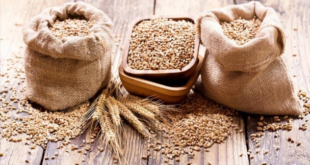It’s been an extremely hot couple weeks since we last spoke. Europe has had devastating fires, and more than 2,000 people have died there of heat-related illness. China and India sizzled in extreme heat, and the consequences for countries in the Global South were devastating. In Seville, Spain, the deadly heat wave was even named—like how hurricanes are named.
The impacts of a scorching afternoon don’t stop when the sun sets—any amount of extreme heat can create irreversible changes in crop production, growing patterns, livestock, and more. We’re seeing the impacts of extreme heat on staple crops like rice, wheat in India, and soy in the U.S. And this is on top of already disastrous challenges like Russia’s war against Ukraine, port restrictions and export hurdles, farmers being unable to access their land, and more. A recent article in Mother Jones brought up the term “heatflation,” referring to the ways that the climate emergency are, directly and indirectly, causing food prices to inflate.

Thousands of cattle died last month in Kansas alone because of heat and humidity. Let’s break down what that means. First, heatflation—higher beef prices are likely down the line. Second, disruptions in food chains and the animals and plants that rely on livestock. Third, because so many animals died in a short period of time, their bodies cannot re-fertilize the soil and instead have to be buried in landfills. This sad reality marks not only a tragic waste of life but also a spike in emissions like methane that are produced in landfills.
It’s becoming more clear than ever before how these crises are intrinsically linked, interwoven with one another. Covid-19 is not over, nor is it the only health crisis going on right now. Noncommunicable diseases like diabetes and obesity continue to be linked to diets heavy in ultraprocessed foods. Meanwhile, better-quality foods are moving further out of folks’ economic reach as prices skyrocket due not only to the climate emergency and heatflation but also to the pandemic, the war in Ukraine, biodiversity loss, and more. In this week’s episode of Food Talk with Dani Nierenberg, Dan Saladino of the BBC dives deep into plummeting biodiversity, whose long-term effects we can’t even foresee. We’re losing crops before we even know about their health benefits, which will now be gone for us forever. We can no longer continue to silo off these emergencies whose impacts are so intertwined.

Here’s an example. The U.S. could combat monkeypox with an investment of $7 billion, per the Washington Post—which is, to be clear, less than one percent of our country’s 2023 military budget. So it’s not really about the money. It’s about priorities. The current excessive heat didn’t come out of nowhere—some people simply haven’t been able to bring themselves to care about our planet and its inhabitants.
If we had taken a stronger stand against a changing climate 20 years ago, who knows how today’s world might’ve looked. What diverse animals, plants, and ecosystems might still exist? Would Covid-19 have torn apart our world as dramatically as it continues to do? Who would no longer be starving or even food-insecure?
When I was in high school and first learned about global warming, as it was called then, I recall getting the impression that it would take place so far into the future that I’d never see it. I quickly grasped the urgency—and I’m inspired today by the young people who are also seeing the climate emergency for what it is: An existential threat. But back then, the year 2000 came and went, as did 2005, 2012, 2015, 2020—all supposedly pivotal benchmarks in moving toward a more green and just society. Now, the year 2050 is being thrown around in climate timeline discussions. Commitments by 2050 mean nothing. It will be too late by then. The world will be on fire.

But I am hopeful. As I mentioned, all these crises are interlinked—which means the solutions can be, too. So we need governments, philanthropic organizations, academic researchers, and you and me to be all-in on high-priority solutions. Solutions to the climate emergency, but not only that: Solutions to biodiversity loss, to disease, to war and famine and hopelessness, too.
When it comes to the climate, it’s too late to chill out. It’s time to get our priorities in order and save the world. Now!
By Danielle Nierenberg,
www.foodtank.com
 THE GLOBAL WINDOW OF TURKISH FOOD AND AGRICULTURE The Global Window of Turkish Food and Agriculture Sector
THE GLOBAL WINDOW OF TURKISH FOOD AND AGRICULTURE The Global Window of Turkish Food and Agriculture Sector









